Fish of Fury is dead, you guys; give it up. But the Devilfish itself isn’t, so don’t give up on that guy. Click to read the updated CA2018 article, or check out the Tactics Corner for more reviews and strategies.
Overview
The Devilfish is the standard troop carrier of the Fire Caste; in modern terms it could be considered equivalent to an armored personnel carrier or infantry fighting vehicle, though of course it doesn’t precisely match wither either of those definitions. Regardless, the Devilfish is a quick-moving and heavily-armored transport vehicle that can deploy an entire squad of Fire Warriors to any point of the battlefield, including any attached drones or HQs, and do so regardless of any interposing terrain or other battlefield conditions. Its powerful gravitic engines combined with high-output vectored thrusters allow to to easily pass over obstacles, and when needed it can even make short “jumps” by directing the thrusters downward to temporarily give it the ability to gain additional altitude to clear something.
On the tabletop the Devilfish is a fairly standard transport vehicle, albeit one with a few unusual features. Its 12″ move and Fly keyword make it exceptionally mobile overall and let it get nearly anywhere you want to move your models to. Toughness seven and a 3+ armor save, along with twelve wounds, put it a bit over the average in terms of resilience; it can usually survive the opening salvos of a battle, though concentrated firepower can certain bring it down. Ballistic skill 4+ is pretty average for the faction, and being both a Tau unit and a vehicle its close combat prowess is nothing short of abysmal. Like all large vehicles it degrades as it takes damage, with its movement profile being on an exceptionally-sharp curve (12″/6″/3″). A transport capacity of twelve models (carrying either infantry or drones) is also a nudge above the standard; at 98pts for the basic version, the Devilfish is not horribly expensive, but also not exactly cheap (and is a fair bit more than Rhinos and the like.)
Special Rules and Options
A Devilfish comes with a couple of basic special rules that are present on most all such tanks; Explodes has a chance of doing mortal wounds to nearby units when the vehicle dies and Hover Tank means that you can measure distance to its hull instead of to its base. It also has some rules covering its attached drones, but since those are mostly covered by the relevant entries I won’t go into them here- the main thing to note is that the drones cannot re-embark once they have disembarked from the vehicle and that while embarked on it, the Devilfish is considered to be equipped with their weapons (and hence can fire those weapons using its own ballistic skill.) Apart from that, the tank lacks any of the usual Tau special rules, though it can benefit from sept abilities and whatnot.
Equipment-wise, a Devilfish comes armed with a Burst Cannon in its chin mount (18″ S5 AP0 Assault 4), which is a respectable gun if not an exciting one. The two Gun Drones also give it access to a total of four Pulse Carbines (each one being 18″ S5 AP0 Assault two), for a total of twelve S5 shots coming out of the chassis in total- not at all bad for a transport vehicle. The short range is definitely a limiter, however, as is the middling accuracy. For +10pts you can trade out the Gun Drones in favor of a pair of Smart Missile Systems (30″ S5 AP0 Heavy 4 ignores LOS/cover), which is a big boost to your output despite nominally being the same number of shots as the basic setup. However, this version is a lot more static and thus isn’t nearly as useful in a lot of the main roles that I think you want to be using the Devilfish for, so I don’t favor it much- the option is there if you want it, though.
You can also slap up to two Seeker Missiles onto the chassis for 5pts apiece, which is an acceptable deal all things considered; most people don’t want to waste their early firepower trying to destroy a Devilfish, so you should generally get to use the missiles before it is killed. On the other hand, a lot of other platforms have better ballistic skill (e.g. Hammerheads) or are more mobile (e.g. Piranhas), so I think you are generally better off starting with those and then only putting the Seekers onto your Devilfish once you’ve filled the rest of them out.
Uses
At a first glance, the Devilfish is a pretty poor vehicle; it costs significantly more than similar vehicles in other factions (e.g. the Rhino), and yet doesn’t have nearly the firepower or survivability of some other equivalents (e.g. the Wave Serpent.) It seems stuck in a terrible middle ground where it is too expensive to field in numbers, yet not expensive enough to be gifted with any particularly useful or powerful abilities that make it stand out from the rest of the pack.
To assume all this is to completely miss the context of the unit within the codex, however; while the Devilfish is inarguably numerically-inferior to some other units, the role it fills in a Tau army is extremely useful and makes the point cost at least bearable, if not exciting. It isn’t necessarily an auto-take for every Tau army you create, but it can do so many different important things that I think you need to at least consider the possibility of fielding one in many different sorts of Tau armies.
The most trivial use for the Devilfish is actually its stated purpose: getting your troops across the field. Strike and Breacher Teams are reasonably mobile on their own (especially with the right Sept choices or support auras), but they can benefit a lot from having a more efficient way to get them where they need to go- especially Breachers. A Devilfish moves about twice as fast as either of them do, and its ability to Fly means that it can at the least keep up with infantry models and more commonly outmove them significantly, especially on built-up terrain. Since most Tau infantry ironically engage best at close distances, getting them where they need to be is an important consideration- especially since the Devilfish’s speed means that it can often outmaneuver the enemy and allow you to fight them one piece at a time.
Another basic feature of the Devilfish is the protection it offers such units; while Tau infantry are not the most vulnerable in the game (thanks to decent morale and a 4+ armor save), neither are they exceptionally tough and a dedicated barrage of anti-infantry fire will most certainly wear them down. The Devilfish can prevent this by giving your opponent no targets, or at least no good targets, for their Bolters and similar weapons. Such guns will plink off its armor with little effect in most cases and their effect on other units (e.g. Riptides, Broadsides) is going to be little better, so you can often effectively negate all of those guns in the early turns of the game, though later on you’ll likely be forced to disembark in order to get work done.
But those are just the most obvious ways to use the chassis- if those were all it offered, it wouldn’t really be a very interesting unit. But its utility goes well beyond that most basic level, working in concert with the rest of your strategy to actually be a very powerful inclusion in many cases. For example, a Devilfish can reduce your army’s drop count by anything from one to five or more quite easily when you start multiple squads embarked on it- and Tau armies almost inevitably include not only large numbers of troop units (in order to get those all-important battalions for extra CP) but also large numbers of infantry characters such as Fireblades, Marksmen, Ethereals, etc. It’s pretty easy to put two minimum Strike Teams and two characters inside your Devilfish, reducing your drop count by three overall and thus significantly improving your odds of getting the first turn overall- and with a heavy shooting army like Tau, having the first turn can be a deal-breaker against another shooting army or the like.
But of all its roles, I think one of the most relevant is the Devilfish’s ability to control the enemy’s access to the battlefield and to your own units. This can be done in several fashions, but a very common (and simple) one is just to use it to occupy space; Devilfish are actually quite large models, all things considered, and like all units the enemy can’t move within 1″ of them except during a charge. As a result, it’s not hard to use one or two chassis to block off access to a section of the field in order to stop the opponent from moving units there- perhaps to keep them away from an objective, or to block their lines of fire, or to prevent them from moving in and charging something else. This latter tactic is made even more effective because if the opponent decides to charge the Devilfish in order to get in as close as they can or destroy it, you can use For the Greater Good to punish them for it- often times, quite heavily. Even an Imperial Knight hates being forced to take 3-8 armor saves every time it declares a charge, as that attrition will stack up quickly and make a real mess out of their units. Using Devilfish to block sections of the field with their giant, metallic bodies is a fundamental tactic to getting good mileage out of them.
This ability to control the enemy’s movement goes well beyond that, however, as you don’t have to be nearly so passive with it. In 8th edition any unit can declare a charge, even vehicles, and this means that tough units like Devilfish are great for locking the enemy in combat for a turn or two to delay them while you deal with other threats. I could write a whole article on the intricacies of when and where to best utilize this tactic (and indeed, other people have in many cases), but I think that even just a few moments consideration should make the value of such a tactic obvious- while something like a dozen Marines or forty Cultists might be scary to many parts of a Tau gunline, against a Devilfish they are unlikely to achieve much of note and the Devilfish itself is free to withdraw from the fight on your turn without any real penalty. Even against tougher fighters, holding them for even just a single turn can make a critical difference, and if the ‘Fish dies in the processs… well, that’s just a chance for some free mortal wounds to the enemy, isn’t it?
We also shouldn’t forget some of the bonus features of the Devilfish- namely, its attached drones. While it is typically best to keep these embarked in order to maximize firepower and protect the drones from giving up an easy kill, there are plenty of times when you’ll want to separate them as well. Perhaps you need units to be in two different table quarters, or two different objectives, in order to score points that turn; perhaps you need a few more ablative wounds for a nearby Riptide; perhaps the vehicle is just so wounded that the drones actually have better ballistic skill. But don’t forget that you always have the option to get them out, and don’t forget to disembark the drones if and when the vehicle is destroyed- quite often, having that one more unit for the enemy to destroy can make for a very frustrating time that can keep you in the game and scoring a little bit longer. You’re paying the points for those drones, so you might as well get all the use out of them that you can.
With all of that said, the Devilfish is not for every army. It is a large vehicle target in an army that often doesn’t have many such units, and unlike a battlesuit you can’t use drones to protect it- that’s an easy Big Game Hunter or Marked For Death point for your opponent right there. Armies that (for whatever reason) don’t feature many troops may also find it subpar, as an empty Devilfish is one that isn’t really pulling its weight very well. As expensive as it is, it can also be something of a liability in armies that are already low on model count or that lack in certain kinds of firepower- twelve shots is a lot for some armies, but when you can get more than that out of a single minimum-sized troop squad, it feels like a bit of a consolation prize. I also wouldn’t recommend running more than two Devilfish, or perhaps three at the top end- any more than that and you are cutting significantly into your firepower, and the marginal utility of them goes down pretty quick.
Countering
Although the Devilfish is a very flexible and versatile unit, its raw numbers are pretty weak overall; any kind of dedicated anti-vehicle firepower should put one down pretty easily, as it’s only barely tougher than your standard Rhino or the like and more than half again the cost. This can be done at long range before the Devilfish delivers its contents or at closer distances once the Tau player tries to start using it to control your movement and charges. Units that can fall back and still act (either shooting, charging, or both) also are much stronger against Devilfish tactics- and doubly so if they have the ability to move over enemy models in order to get past the ‘Fish’s big fat butt and to the juicier parts of the Tau army hiding behind it.
Remember, also, that these blocking and movement-control tactics work both ways; if you preemptively charge a Devilfish with a transport or disposable unit of your own, it will be unable to do the same back to you in turn. As for the overwatch, all of the usual tricks work there- units that ignore it, hiding out of line of sight, putting something tough or sacrificial in first, etc.
Final Thoughts
The Devilfish might not seem like a particularly good unit in the abstract, but its usefulness shows the fault of analyzing units purely by their numbers in a vacuum. Although it brings little firepower to a Tau army, it contributes hugely to your mobility, utility, resilience, and control of the field, all of which are critical parts of winning a fight. It might not be a unit for every army, but it’s certainly one that is under-utilized by the Tau player base as a whole.
As always, remember you can get your wargaming supplies at great discounts every day from the Frontline Gaming store, whether you’re looking to start a new army or fill out an existing one.

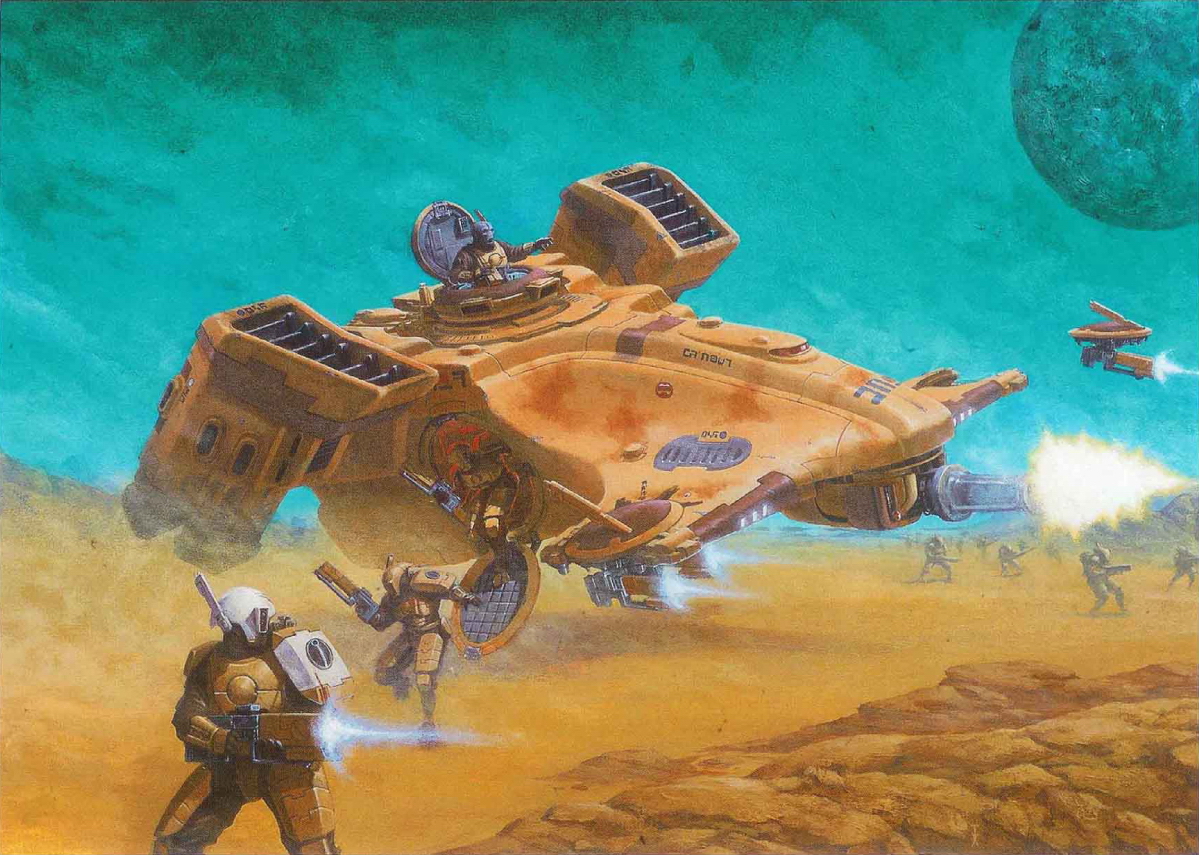
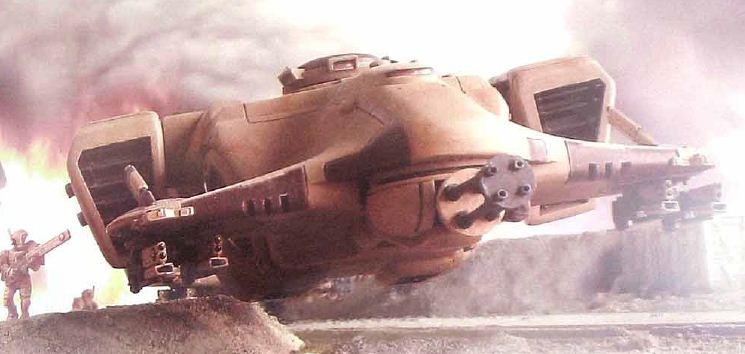
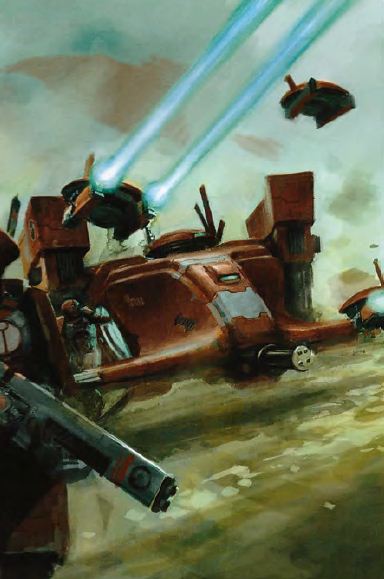
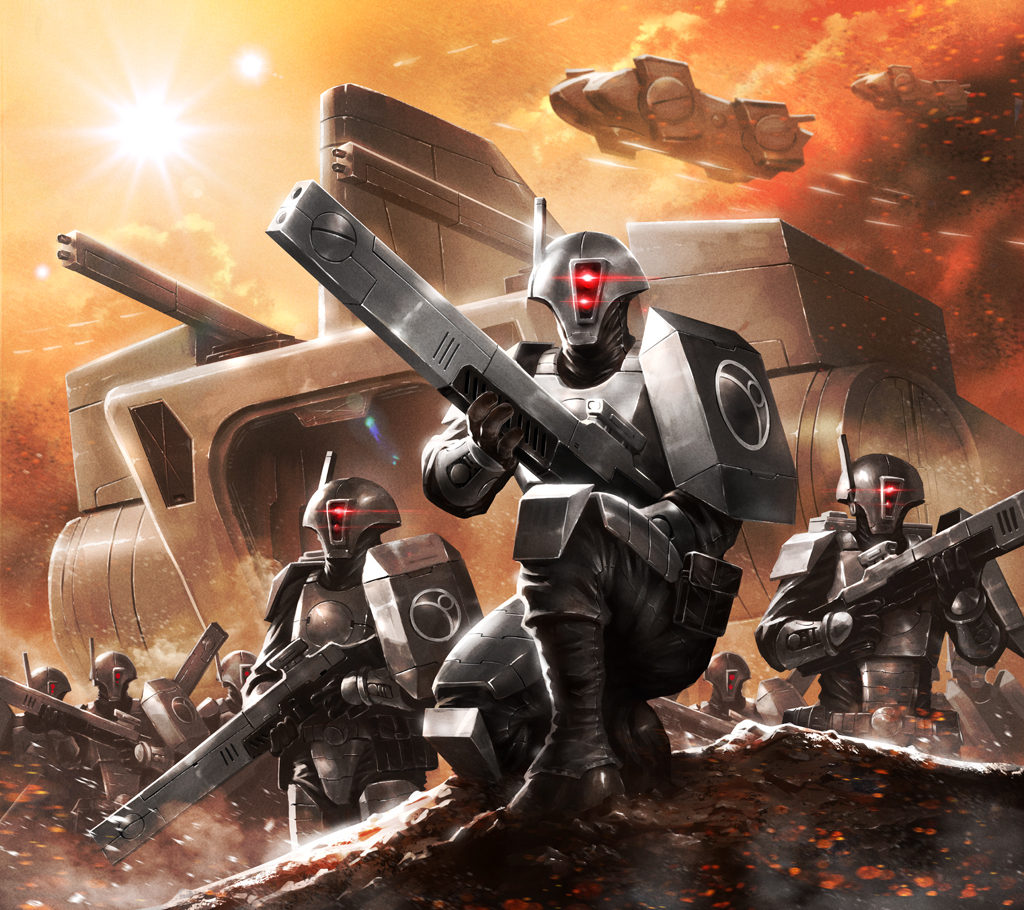
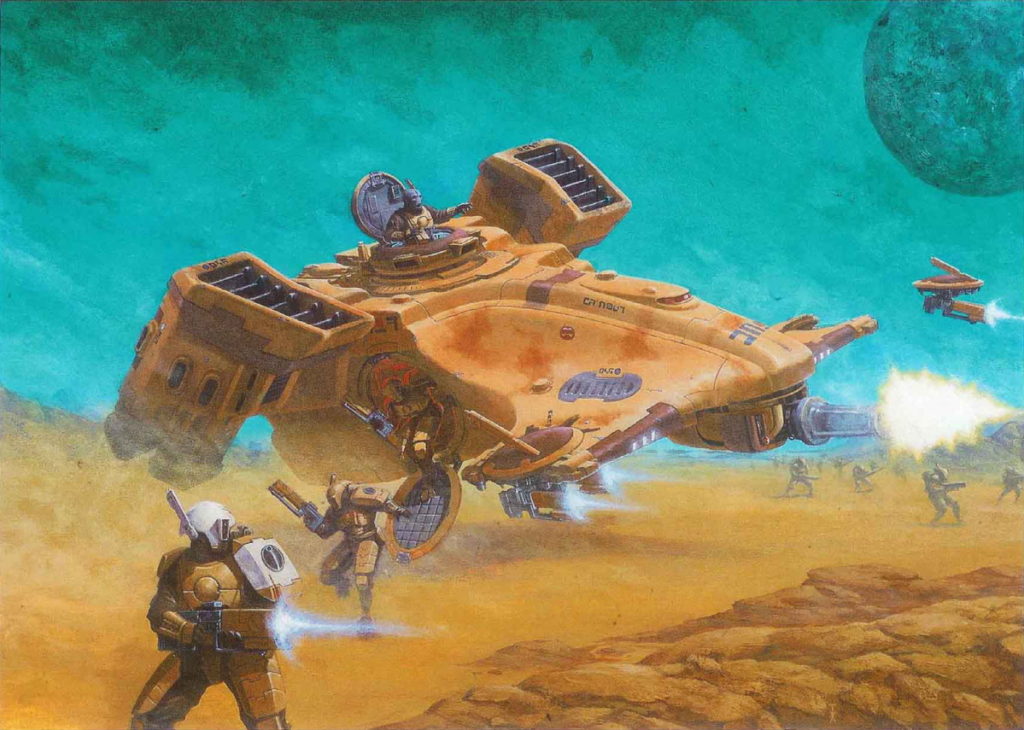
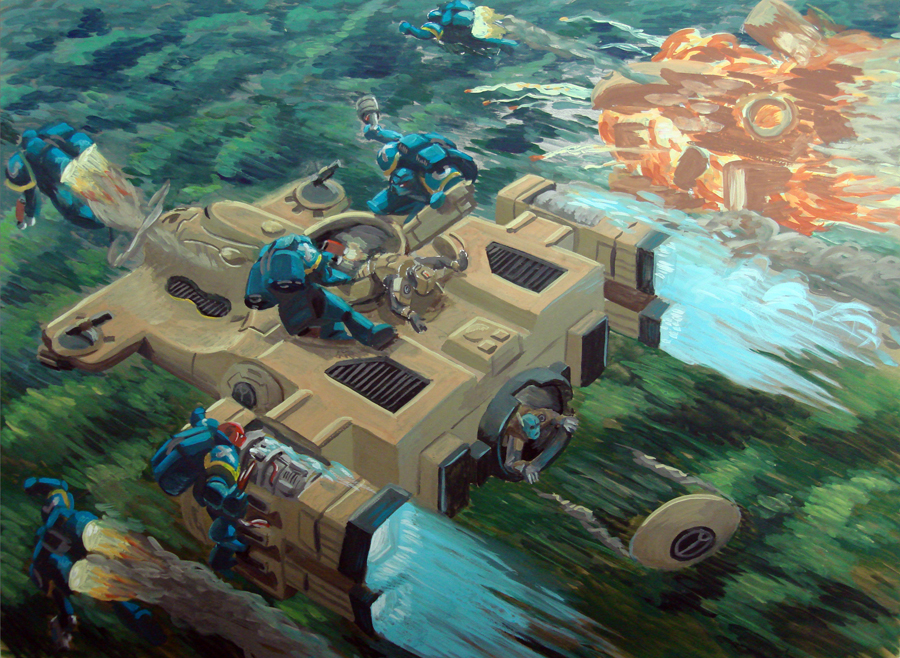

A T’au list in the BCP app with Devilfish is hard to find but not impossible. I definitely agree they are underutilized, but I’m probably just as unsure how to ensure they consistently make up for their cost as the rest of the T’au playerbase seems.
You’ve made some very compelling points, but I’m still having a hard time envisioning a list where I’d realistically take one or more. Would you recommend “target overload” where the rest of the list consists of other ~T7 targets (Hammerheads, Riptides, etc.) so that there might not be a clear target for your opponent? But you also said lists with low model counts might struggle when taking ‘Fish so maybe not. If the list is more geared towards a Battalion-amount of infantry, then I come back to the point you made in the article, that it seems just as well to take more infantry for the point cost of the transport.
And since we are on the topic of under-utilized units, do you think the drop-reduction, size, and lane-blocking that the devilfish is valuable for can be found in things like the Shieldline? Which seems like it would also provide the same buffs, while trading the movement and for about a 30-40 point discount.
I’ve run them with success in a couple different situations, depending on what the “primary” use for them is. When I was running Tiger Sharks, I had a pair of Devilfish in order to ensure a low drop count and prevent my infantry from being targeted in the early turns; some of my battlesuit- and Riptide-heavy lists have also featured either a single ‘Fish (just to reduce drop count) or a pair of them (to serve as a blocking/control unit.) But yes, I do think you need a certain weight of other heavy targets to make a Devilfish worthwhile in most cases- the solo ‘Fish can work if you have a LOT of characters to cram into it and you’re very intent on going first, but more typically you want to see at least 3-4 other big targets to draw fire away from your ‘Fish.
I don’t rate the Shieldline or Gunrig much; although they do have some advantages, the inability to effectively transport troops across the field as well as the inability to carry more than one squad are both major downsides; they also can’t assault enemies to delay them, which is one of the biggest utility features of the Devilfish. The Droneport is a little better, but not by enough to actually feature in a competitive list I don’t think. (I intend to do some articles on those three in the near-ish future, so I’ll discuss them in more detail there.)
Yes I think the Devilfish does best in a T7 saturation list where there are lots of more threatening targets for the opponent to use their ranged anti-tank on. If you have Longstrike and his Hammerhead buddies on the table the Devilfish looks like a poor target choice which keeps your valuable Strike Teams alive to score VP.
In a more typical Tau list with footslogging infantry and battlesuits the Devilfish just makes too good a target.
Nice article. I didn’t see much utility in devilfish, but I recently watched nick nanavanti play hive fleet kraken tyranids vs tau on his fb stream. I play both armies and was intrigued.
The tau list was longstrike, 3 ion hammerheads, 3 cib commanders, 3 fireblades, 3 marksmen and 30 fire warriors in min squads – inside 3 devilfish.
The tau player didn’t want to be charged and wrapped in combat by genestealers, so he formed a circle with devilfish in front and had characters in the middle for markerlights. He kept formation and the genestealers couldn’t quite kill 2 hammerheads fighting twice. Ended up winning the game by 2 points.
It was a cagey game where the hammerheads did all the work at long range, he hid his firewarriors to stop flyrants monstering them. The devilfish were instrumental in the win.
Yeah, I think that game was a good illustration of the value Devilfish can have, although I don’t think I actually like the Tau list there overall. Still, it illustrates some important concepts and does a lot of things right, so anyone curious as to why you would “waste” points on transports that don’t shoot might take the opportunity to watch the battle and how it plays out.
I love Mech T’au in general, so the Devilfish is right up my alley aesthetic wise. It helps that T’au tanks aren’t petite when it comes to movement blocking.
I would not mind if the gun drones got a discount down to 10pts a pop in CA to reduce the cost a little or maybe a direct reduction to the Devilfish itself. Not a large one though as I do find them better then what you’d expect for the reasons previously outlined.
A flying transport that cuts down on drops, is reasonably tough and can screen without getting trapped is nothing to sniff at.
Not really related to the points drop in CA18 and more just because I was slow on the uptake with the differences in the 8th edition rules there is another really valuable use of the devilfish – emergency extraction of trapped infantry.
Having an infantry unit trapped in combat can be back-breaking for T’au armies. A devilfish with its very good mobility can get over to the trapped models and then they can embark into the transport away from being trapped – intervening models do not prevent embarking in 8th. If that leaves the T’au army free to fire upon a priority target it can be a game-changer.
As a trick it is sept locked and therefore yet another reason to think twice about using Kroot but when your opponent thinks they have you at their mercy with clever positioning in the combat phase it can be awfully nice to have a get out of jail free card sitting on the table.
More generally the points drop on both the Devilfish and the Gun Drones make it a rather more appealing prospect – it will never be a powerhouse of a unit but it does have a fair bit of utility and sometimes having the right tool at hand is what wins you the game.